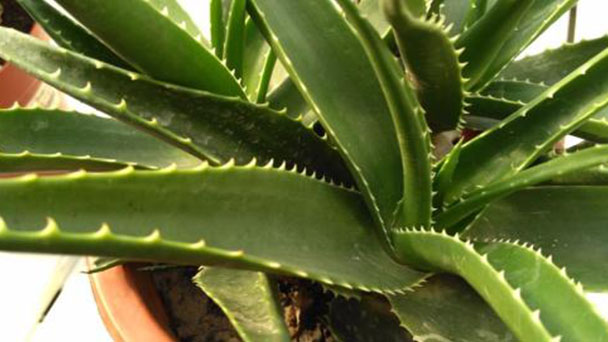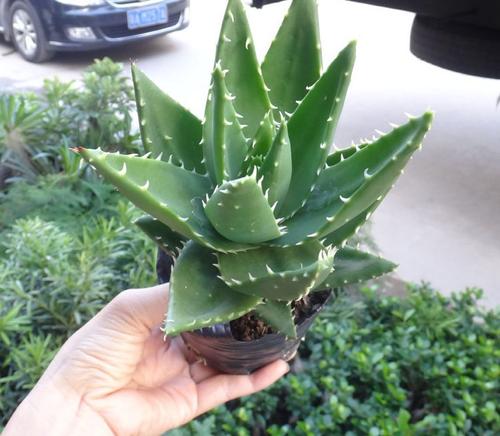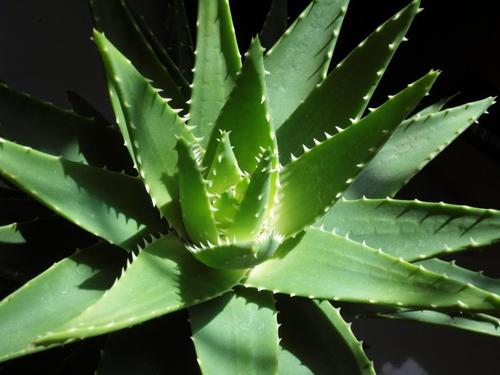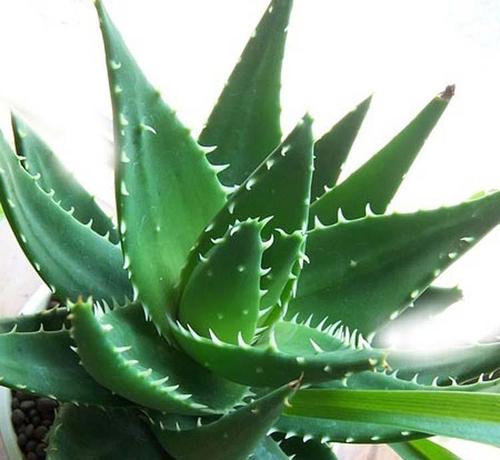Aloe perfoliata (Mitre Aloe) profile
Written by Maggie
Oct 13 2021

Aloe Perfoliata, commonly called Mitre Aloe, Rubble Aloe, is native to South Africa. Aloe Perfoliata prefers dry soil, light, warm, avoid low temperature, preferably between 16 and 28 ° C.
Aloe Perfoliata, elegant and compact, with pleasant green leaves, is a good choice for viewing Aloe. It is suitable for medium and small potted plants, ornament windowsill, several shelves, tables, etc.
Aloe Perfoliata picture

Aloe Perfoliata info
| Botanical Name | Aloe Perfoliata |
| Common Names | Mitre Aloe, Rubble Aloe |
| Plant Type | Aloe |
| Mature Size | 12″ (30.5 cm) tall 24″ (61 cm) wide |
| Water Req | High |
| Cold | Not cold hardy |
| Sun | Full sun to partial shade |
Aloe Perfoliata morphological characteristics
Aloe Perfoliata is a succulent perennial herb.Plants are solitary or clustered, 30 to 50 cm high, succulent green leaves, alternate when young, alternate when adult.The leaf blade is lanceolate, thick and fleshy, margin with yellowish serrated spines, surface and back with scattered yellowish fleshy protuberances.Loose racemes emerging from the upper part of the leaf cluster, small cylindrical, orange-red, late winter to early spring.
Aloe Perfoliata habitat
Aloe Perfoliata is native to South Africa.Aloe Perfoliata prefers dry soil, light, warm, avoid low temperature, preferably between 16 and 28 ° C.

Aloe Perfoliata pest control
Aloe Perfoliata has fewer pests and diseases, anthrax and leaf blight occasionally occurring.The treatment can be sprayed with 1000 times solution of 50% carbendazim wettable powder, 800 times solution of 75% chlorothalonil wettable powder or 800 times solution of 70% methyl tobuzin wettable powder.
Aloe Perfoliata major value
Aloe Perfoliata, elegant and compact, with pleasant green leaves, is a good choice for viewing Aloe.It is suitable for medium and small potted plants, ornament windowsill, several shelves, tables and tables, etc.
Aloe Perfoliata propagation methods
It is best to propagate aloe perfoliata in spring and autumn. Like other succulent plants, Aloe Perfoliata can be divided in combination with pot replacement. The mother plant of Aloe Perfoliata can be dug up with roots, and the strong plants can be divided. The plants can be cut into several plants and transplanted. After planting, keep the basin soil slightly damp, with or without roots can survive.Where to grow Aloe Perfoliata
Aloe Perfoliata needs sturdy light. When planting Aloe Perfoliata Mitre Aloe in a garden, make certain it receives sunlight. Full to partial solar is the nice for its growth. If it is an indoor plant, windowsill will be the excellent area to maintain your succulent. This kind of succulent prefers a heat climate. It can stay at minimal 30 °F (-1 °C) which is Zone 10a. If you stay in a bloodless area, it is higher to plant Aloe Perfoliata Mitre Aloe in an indoor environment. It is appropriate to plant in a container. As lengthy as it receives ample sunlight, the plantwill develop happily.
How to grow and care for Aloe Perfoliata
Light care
Aloe Perfoliata are sun-loving succulents that thrive best in the timing and intensity of sunlight in spring and fall. They can be grown in full sun, stored in a well-ventilated semi-shady area during hot summer and stored indoors in a sunny area during winter.
Change the pot
Aloe Perfoliata have strong roots, so they need to be replaced once a year. When replacing the pot, we need to prune the root system that is too long, too old, in order to facilitate the plant's strong growth. Otherwise, it will consume a lot of nutrients in the pot and affect the formation of flower buds.
Water care
Aloe Perfoliata, like other succulents, tend to be more resistant to drought and avoid standing water in the soil until it dries out. In midsummer, the temperature is high, the evaporation is large, the need for adequate watering and often to the foliage water;After autumn, to gradually reduce watering, winter keep basin soil slightly dry had better.
Fertilization care
Aloe Perfoliata are fat-loving succulents. During the growing season, lean and decomposable liquid or compound fertilizers are applied every 15 to 20 days. Some slow-action fertilizers are spread over the surface of the soil to allow the plants to absorb slowly and have a good effect.Fertilizer is mainly composed of organic matter such as horseshoe pieces, sesame paste residue and liquid fertilizer after fermentation, combined with inorganic quick-effect fertilizer such as potassium dihydrogen phosphate and diamine phosphate.When chasing the fertilizer solution, the basin soil should be fully watered.In addition, should also avoid fertilizer droplets on the leaves, otherwise it will burn the leaves or lead to black spot.
Soil care
Loose, fertile, well drained and ventilated sandy soil should be used for basin soil. Two parts of leaf sapling soil or peat soil, sand soil or vermiculite can be used, one part of garden soil can be used, and a small amount of decrepit bone meal or plant ash can be added as base fertilizer.

Read Next: Aloe Perfoliata Care Tips
Latest Updated
- Benefits of Bugleweed - 7 Science-backed Health Benefits
- Bugleweed Dangers & Side Effects - Is It Poisonous?
- How to Plant Evergreen Trees - What You Should Know
- When to Plant Evergreens - Grow Guide for Evergreen Trees
- 12 Wonderful Evergreen Shrubs for Your Garden
- 12 Popular Evergreen Plants with Pictures for Beginners
- When And How To Prune A Lilac Bush Like a Pro
- How to Grow & Care for Lilac Vine (Hardenbergia Violacea)
- Japanese Lilac Tree (Syringa Reticulata) Care & Propagation Guide
- Shumard Oak Pros and Cons - What to Know
Popular Articles
- Winter maintenance of Antirrhinum Majus
- How to Grow Terminalia Mantaly Tree
- How to Grow and Care for Crossostephium Chinense
- How to grow Antirrhinum Majus in spring
- Peristeria Elata (Dove Orchid) Profile: Info & Care Guide
- Underwatered Snake Plant (Sansevieria Trifasciata) - Signs And How To Fix
- How to Care for Brazilian Jasmine Plant (Mandevilla Sanderi)
- How to Grow & Care for Graptopetalum Purple Delight in Summer
- Rosa Chinensis (China Rose): Plant Growing & Care Tips
- How to Care for Baby Sun Rose (Aptenia Cordifolia)